For a reversible reaction at constant temperature and at constant pressure the equilibrium composition of reaction mixture corresponds to the lowest point on Gibbls energy Vs progress of reaction diagrams as shown. At equilibrium Gibbs energy of reaction is equal to zero.
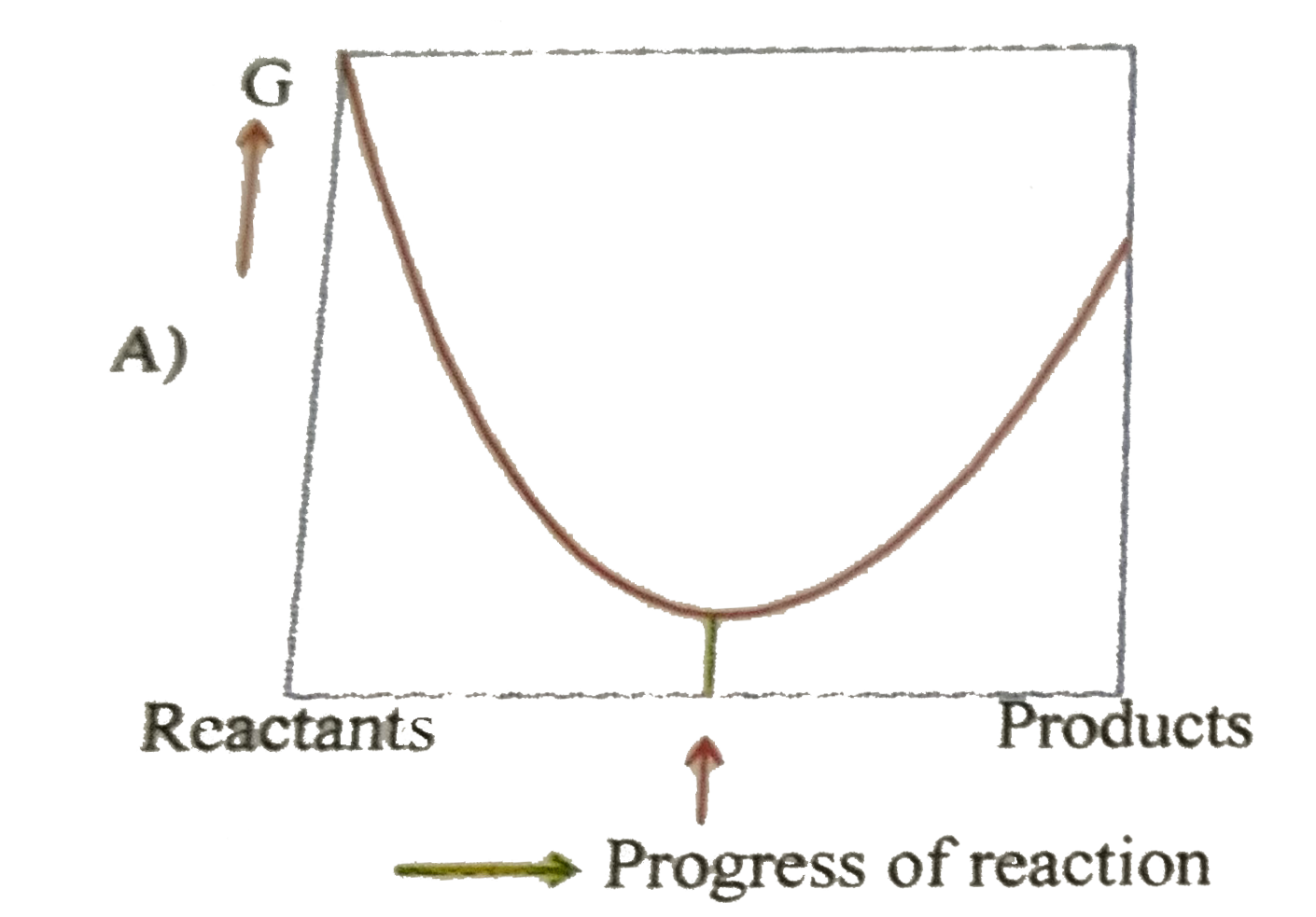
The value of log10Keq is equal to [keq is the equilibrium coustant]
A
−ΔG∘RT
B
TΔS∘−ΔH∘2.303RT
C
ΔH∘−TΔS∘RT
D
RTTΔS∘−ΔH∘
Video Solution
Text Solution
The correct Answer is:B
ΔG0=ΔH0−TΔS0=−2.303RT log Keq
|
Updated on:21/07/2023
Topper's Solved these Questions
- BOOK - NARAYNACHAPTER - THERMODYNAMICSEXERCISE - Passages13videos
THERMODYNAMICS
- BOOK - NARAYNACHAPTER - THERMODYNAMICSEXERCISE - Matching type6videos
THERMODYNAMICS
- BOOK - NARAYNACHAPTER - THERMODYNAMICSEXERCISE - Level -V106videos
THERMODYNAMICS
- BOOK - NARAYNACHAPTER - STRUCTURE OF ATOMEXERCISE - EXERCISE - IV EXEMPLAR PROBLEMS24videos
STRUCTURE OF ATOM
Similar Questions
Knowledge Check
- Question 1 - Select One
For a reversible reaction at constant temperature and at constant pressure the equilibrium composition of reaction mixture corresponds to the lowest point on Gibbls energy Vs progress of reaction diagrams as shown. At equilibrium Gibbs energy of reaction is equal to zero.
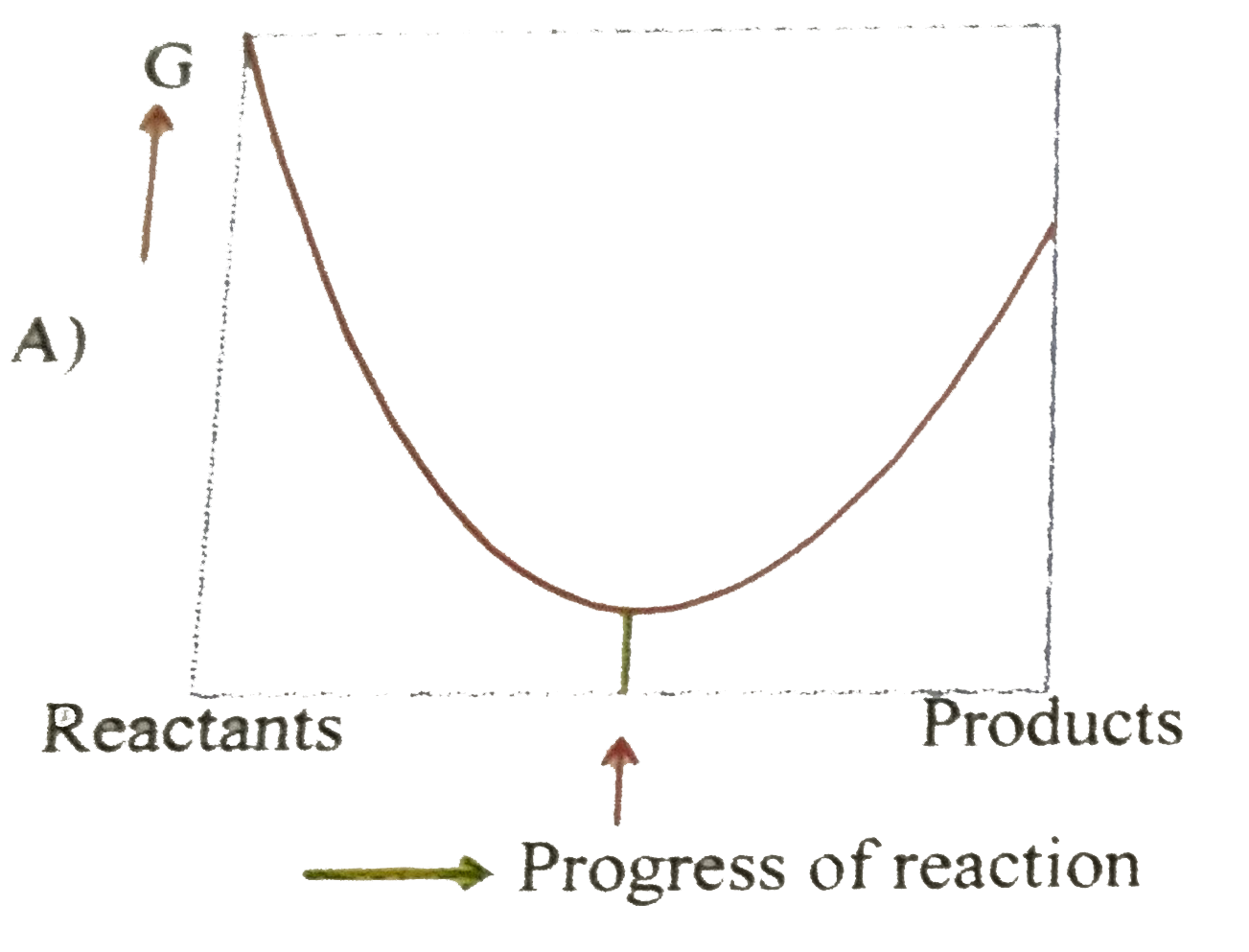
Which diagram represents the large value of equilibrium constant for the reversible reactionA B
B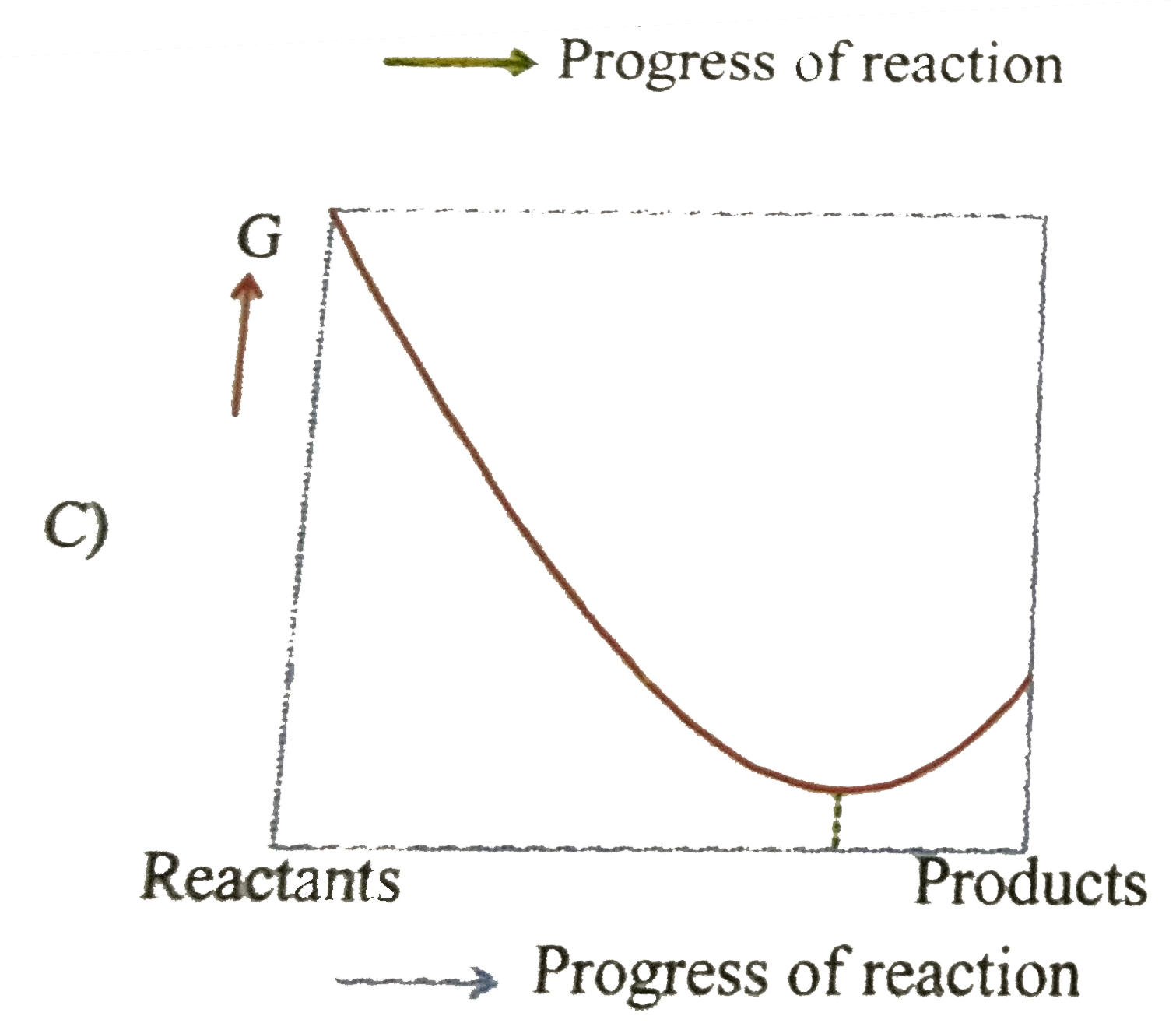 C
C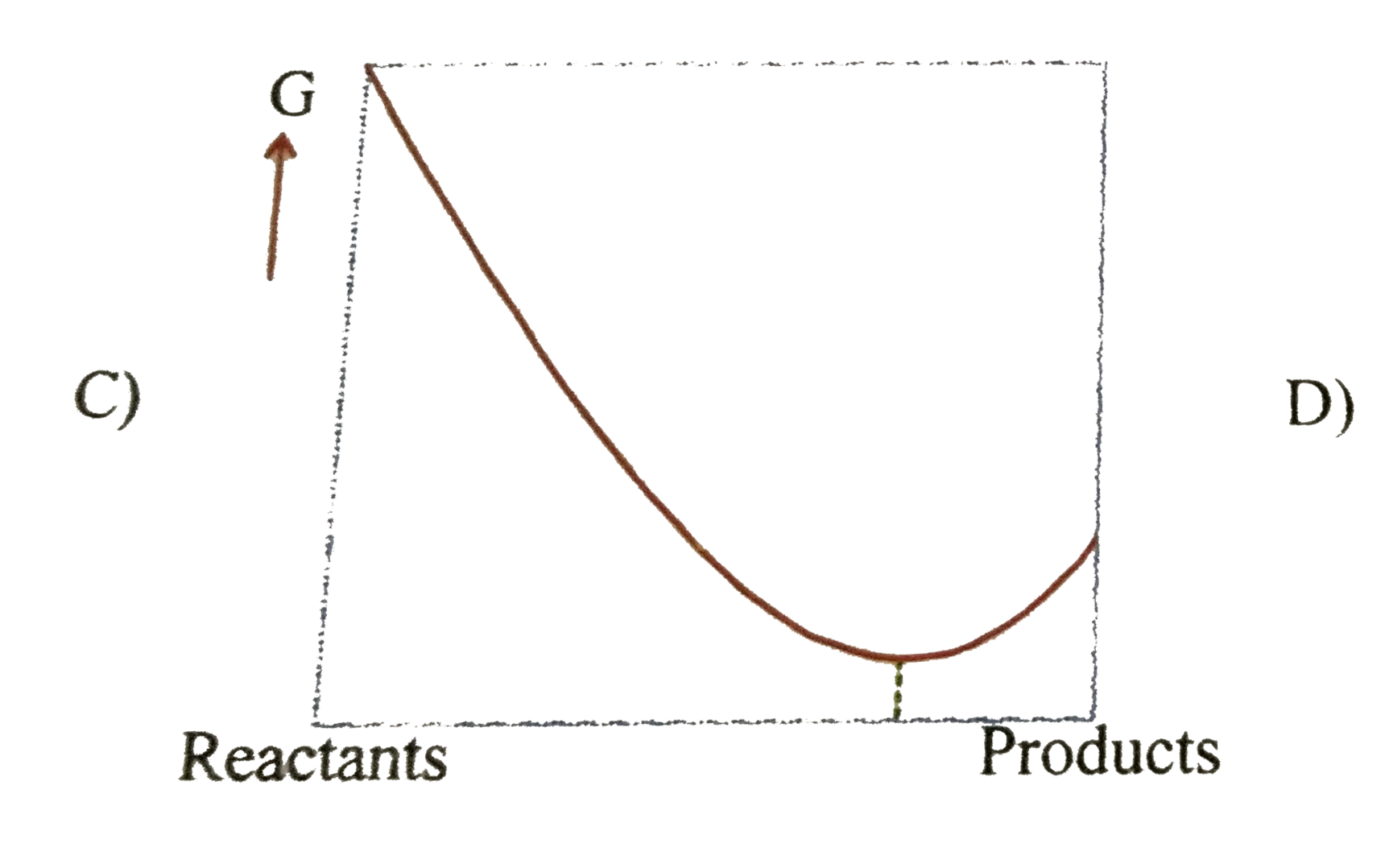 D
D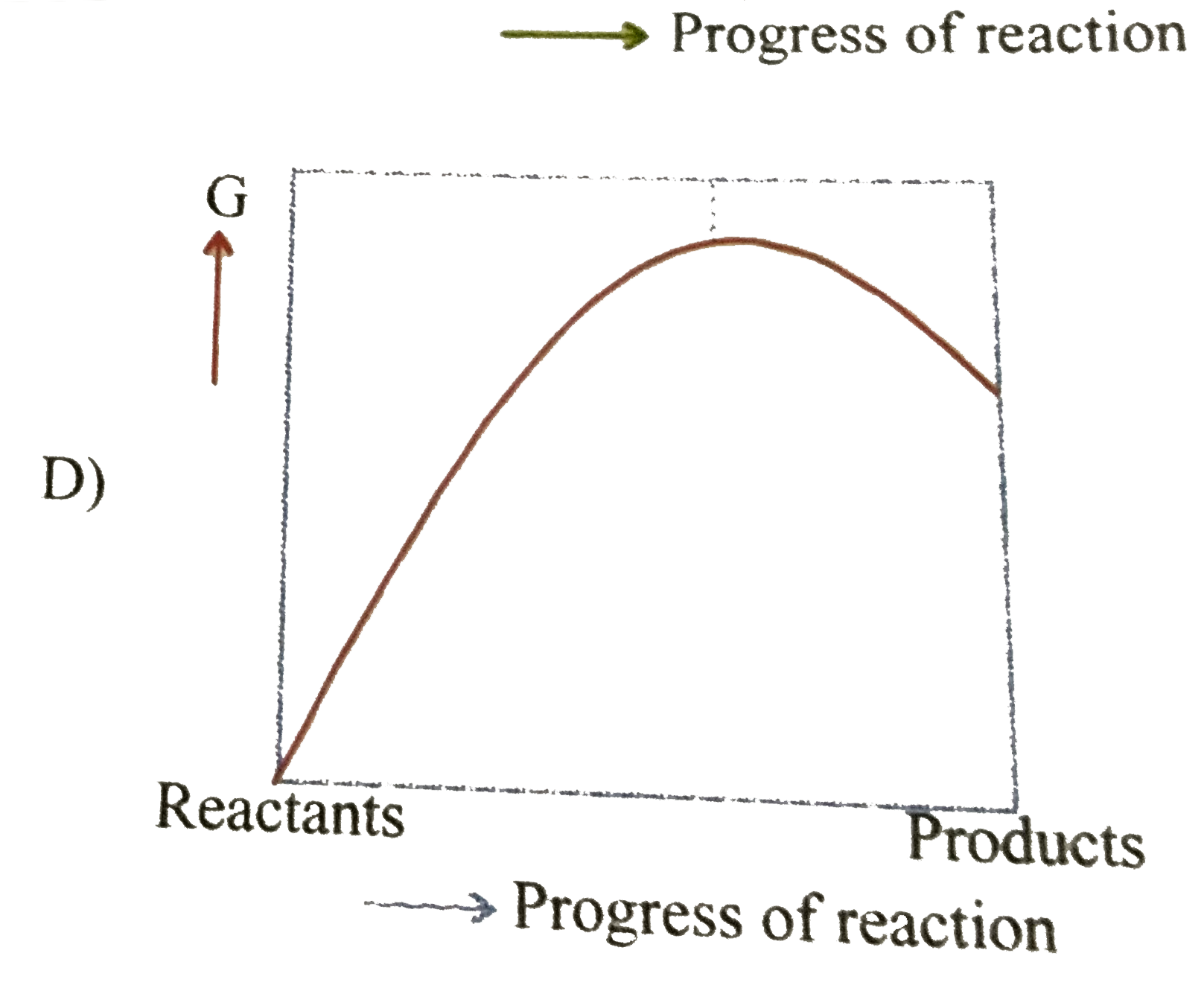
- Question 2 - Select One
For a reversible reaction at constant temperature and at constant pressure the equilibrium composition of reaction mixture corresponds to the lowest point on Gibbls energy Vs progress of reaction diagrams as shown. At equilibrium Gibbs energy of reaction is equal to zero.
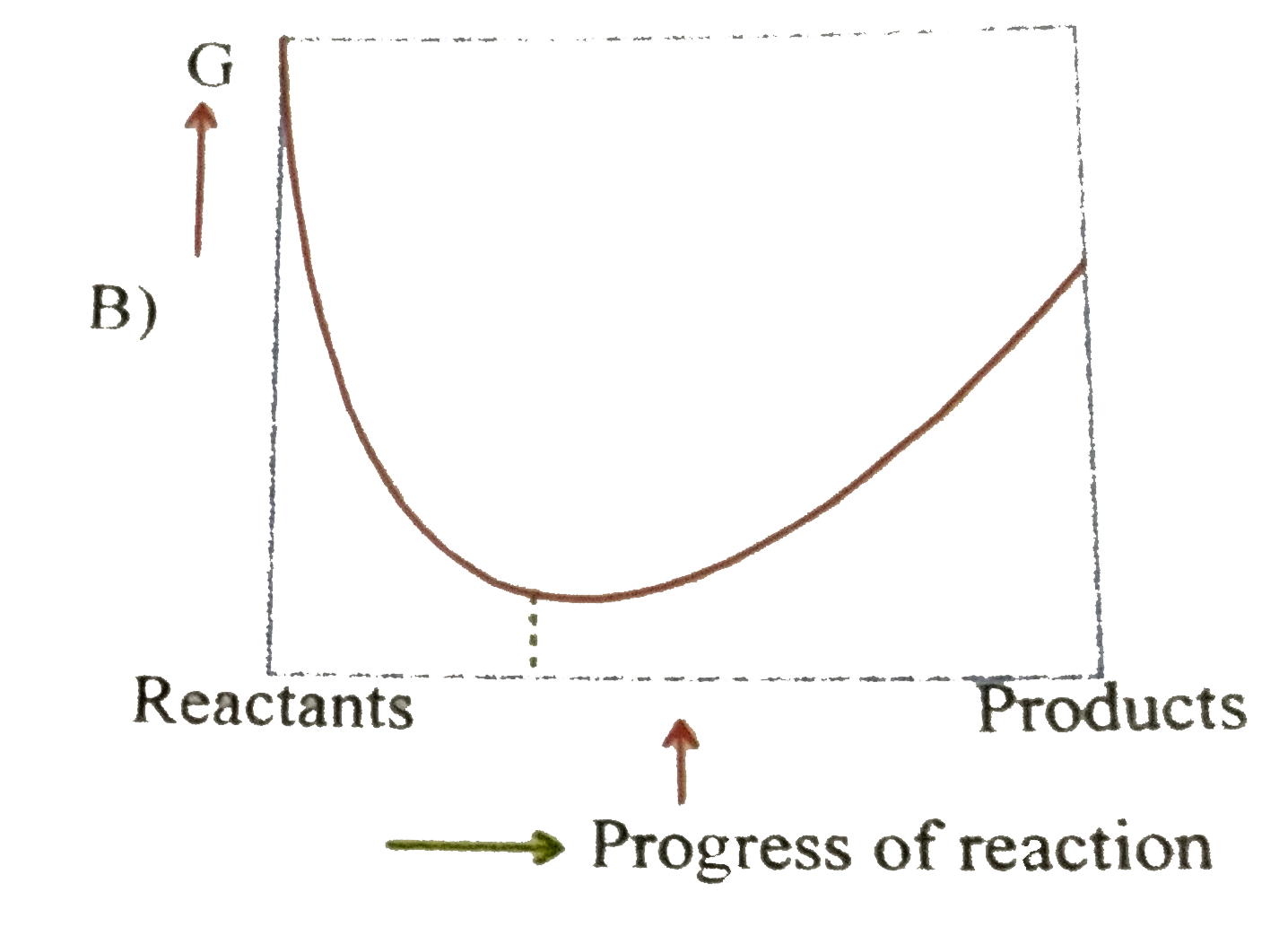
For a reaction
M2O3/4(s)→2M(S)+12O2(g)ΔH=30KJ/mol and ΔS=0.07KJ/mol/K at 1 atm. The reaction would not be spontaneous at temperatureA>428KB>428KC<100KD>100K - Question 3 - Select One
For a reversible reaction if the concentrations of the reactants are doubled, the equilibrium constant will be
AdoubledBhalvedCone-fourthDthe same
In a reversible reaction, if the concentration of reactants are doubles, the equilibrium constant K will:
View SolutionThe equilibrium constant (K) of a reaction may be written as
View SolutionThe equilibrium constant (K) of a reaction may be written as
View SolutionThe equilibrium constant of a reaction and the standard Gibbs energy change of the reaction are related by the equation
View SolutionFor a reversible reaction A+B⇔C+D the equilibrium constant, KC is equal to
View Solution

